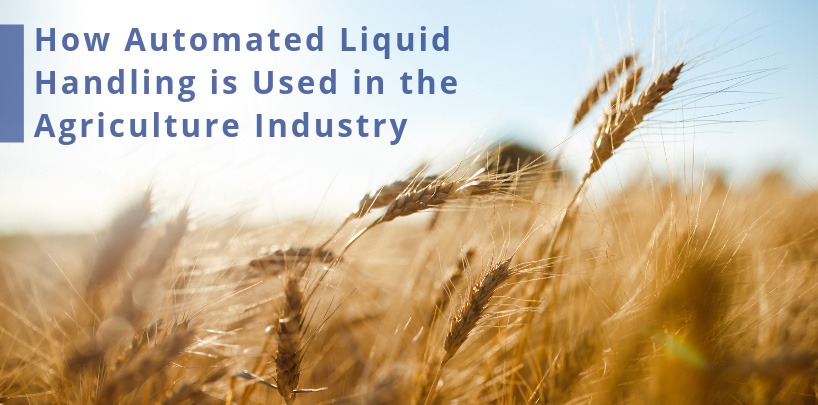
The agriculture industry has played an important role in human history throughout the years. While the basics of farming have not changed much over time, the science, technology, and techniques certainly have. According to a 2006 publication by the American Chemical Society, modern techniques should be “safe to the environment, non-toxic, fast and automated, robust, highly sensitive and cost-efficient.” Below, you’ll learn more about automated liquid handling in the agriculture industry.
Improve crop production
Perhaps the most commonly used method for modifying an organism’s genome is through CRISPR/Cas systems. This technology utilizes clustered regularly interspaced short palindromic repeats (CRISPR) sequences and a Cas9 enzyme to identify and remove specific strands of DNA which complement the CRISPR sequence. When used in the agriculture industry, this process can edit the genomic makeup of crops, leading to an increase in production and yield.
Identify and prevent disease
As stated above, those in the agriculture industry often use automated liquid handling to conduct gene-editing. In addition to improving crop production, professionals can use CRISPR systems to identify disease-resistant genes in crops. This technology can target and replace specific strands of a crop’s genetic code that may be susceptible to certain diseases, reducing the risk of crop loss. In addition to identifying disease-resistant genes, this technology is also able to recognize drought intolerance or herbicide resistance. Gene editing can be a time-consuming process, but automated liquid handling equipment expedites the process, allowing researchers to examine multiple genome sequences more efficiently and accurately than ever before.
Predict offspring
Laboratory techs can also use automated liquid handling equipment to sequence entire genomes and predict future offspring for crops and livestock. Next-generation sequencing technologies (NGS) allow researchers to analyze entire genomic sequences much quicker than was possible in the past. When used to predict crop and livestock offspring, this technology reduces the risk of crop loss due to disease and can maximize crop yield, leading to stronger crops and livestock.
Comply with stricter regulations
As the agriculture industry continues to grow, the regulations in place also grow stricter. Due to increasing concerns regarding health and nutrition, the United States Environmental Protection Agency (EPA) has imposed multiple regulations related to the use of pesticides and genetically modified organisms (GMOs). The effects of pesticides can be harmful, with roughly 90% of Americans reporting the presence of pesticides in their bodies. As such, many farming facilities are turning to automated liquid handling technologies for a solution to this problem.
These technologies allow researchers to identify the presence of pesticides in crops, often using the QuEChERS method of solid-phase extraction and extract the chemical for safer consumption. Additionally, liquid handling and gene-editing technologies allow researchers to alter the genomic structure of crops without leaving traces of foreign DNA. Because there are no traces of foreign DNA in these gene-edited samples, they are not subject to the same EPA regulations as other GMO products.


